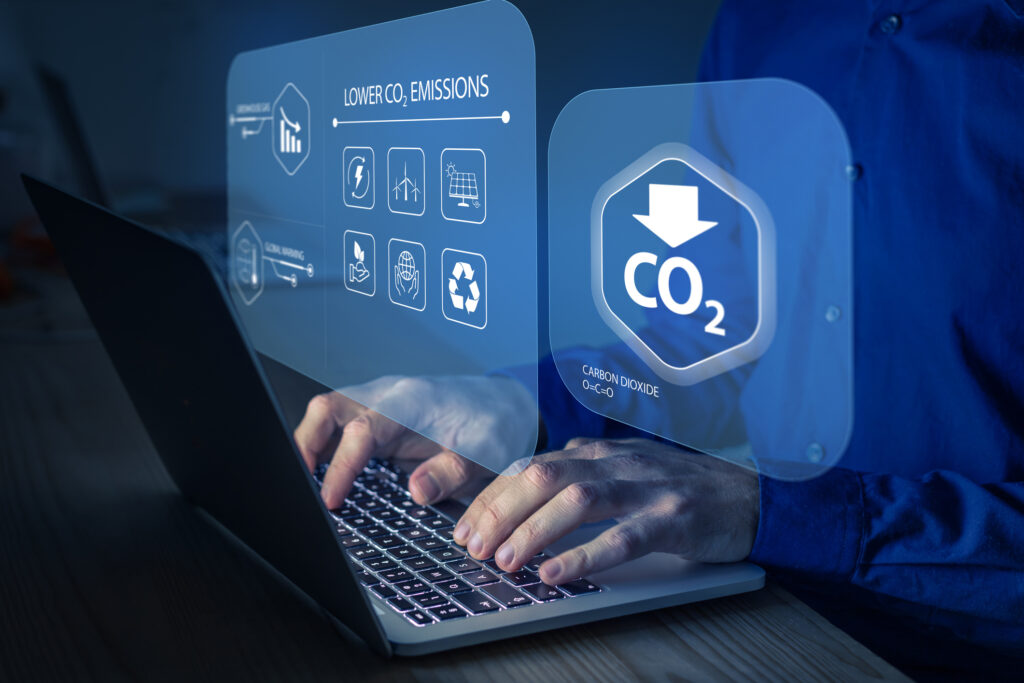Five Simple Steps to Reduce Our Digital Carbon Footprint
Sarah McDonagh (UAB) – 3rd of March 2022

At GreenSCENT, we believe that we have the ability to reduce the worst effects of climate change through simple everyday actions as well as collective action. Today, we are looking at what we can do to reduce our digital carbon footprint.
What do you mean by “digital carbon footprint”?
In order to power our devices, watch a video on YouTube or simply send an email, we need energy.
This energy comes in the form of electricity, much of which is generated by fossil fuels. Our devices and the networks that support them use vast amounts of electricity that have a real physical impact on the environment.
Data centers that store our information are consuming vast amounts of electricity every day of the week. Moreover, the devices that we use such as smartphones are made from precious materials that come with a sizable environmental and humanitarian cost.
This has meant that digital technologies and the networks that support them account for some 3.7% of our global greenhouse emissions (The Shift Project 2019), which is a figure similar to the airline industry. And this figure is set to rise as more of us use our devices to connect, learn and work online.
That said, we can still take small steps to reduce our digital carbon footprint.
Here are our top five recommendations on how to reduce your digital carbon footprint:
- Think twice before you buy a new phone
As the old saying goes, if it ain’t broken, don’t fix it! Our constant urge to have the latest smartphone has a huge environmental and humanitarian cost. Smartphones contain dozens of materials that are extracted from mines that pollute their local areas. In most cases, many of the workers who work in these mines are underpaid and forced to work in dangerous conditions. Moreover, many of the minerals that go into our smartphones, such as tin, tungsten and tantalum have been classed as conflict minerals, whose extraction directly finances violent conflict in places like the Democratic Republic of Congo. By avoiding the rush to get the latest smartphone, we can prevent the destruction of the local environments and communities.
- Repair or recycle your smartphone where possible
Many of our smartphones are manufactured to have a short lifespan of about two years. That said, companies like Ifixit offer free manuals to repair your devices. Apple too recently announced an initiative called Self Care Repair to help customers repair their own devices using their manuals and parts.
If your device is beyond repair, consider recycling it. Currently only 20% of our mobile devices are recycled. We can change this by recycling our smartphone devices correctly. This means that the precious materials from your smartphone can be reused for other devices. Fairphone has compiled a list of companies that offer recycling services across Europe.
- Adjust the power setting of your devices
This is a simple one. Reduce the amount of electricity your devices use by adjusting its power settings. If you are going to bed, why not put your phone on airplane mode or turn your laptop off? This will conserve the battery of your devices and mean that you won’t have to charge them as often.
- Turn off automatic video play
Another easy one. By simply deactivating the autoplay function on YouTube or Netflix, you can save on energy and also reclaim your time for yourself instead of watching another cat video!
- Declutter your inbox
Not only is a cluttered inbox stressful, it is also bad for the environment. This is because the servers that store our emails use vast amounts of energy, the majority of which currently comes from fossil fuels. This energy cools the operating systems of the data centers. If you find yourself with a cluttered inbox, why not unsubscribe to some mailing lists. This will help reduce the amount of emails coming in and overall help reduce your digital carbon footprint and peace of mind.
Keep posted for more tips and tricks to help reduce your carbon footprint by following us on Twitter, Facebook and LinkedIn.
